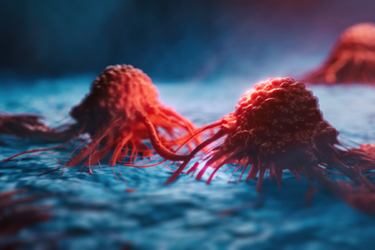How Our Foundation Is Advancing The Use Of Real-World Evidence In Cancer Research
By Jenny Ahlstrom, myeloma survivor and founder of the HealthTree Foundation

The pandemic has sped up the widespread use of real-world evidence (RWE), making its advantages better known. RWE is being used to inform the development of new drugs and medical products. It allows us to pull from more comprehensive and larger data sets outside of clinical trials. It helps inform about the patients’ treatment journeys. Challenges remain in assuring the quality of the real-world data that is collected and the opportunity for long-term follow-up for participating patients, but those are challenges that can be overcome with the right tools and support. Today’s world of healthcare data is enamored with machine learning and artificial intelligence, but without routine patient involvement and patient data contribution, the data will always be open loop and incomplete.
As a newly diagnosed multiple myeloma patient in 2010, I wanted to see data on patients that “looked like me” – same age, same genetics, or as similar features as possible. With myeloma experts disagreeing on treatment protocols, I wanted the data (not professional preference) to help guide me as I selected my first and most important therapy. I wanted to know: Of the patients who look like me, who was living the longest? Who was having the greatest outcomes? And which protocol did they use?
I realized that answering these questions required a comprehensive data set that did not exist yet, one not found today in the typical EHR, insurance data, or other common sources of data used in healthcare research. Without that data, I relied on the experience of a multiple myeloma specialist who had practiced at a facility with the largest number of myeloma patients at that time. It was my only option when treatment was to begin within days.
After undergoing tandem autologous stem cell transplants and two years of maintenance therapy, my husband and I created the HealthTree Foundation to solve this key data problem. We were determined to close the loop. We would build a patient community by providing patient education and support programs and we would then invite that community to contribute their data and unique myeloma stories to academic research.
The patient is heralded as the most important stakeholder in healthcare. Facilities and pharmaceutical companies tout being “patient-centric,” but if the patient is never invited to be part of the process or cure, then are these claims really true?
What We’re Doing At The HealthTree Foundation
Over the last nine years, we have built eight different software tools to facilitate patient advocacy programs. Our most important tool in the software suite is the HealthTree Cure Hub, a patient data portal that has over 10,000 myeloma patients who trust our objective to find faster cures. Because we’ve gained the trust of our community, patients share their myeloma stories with us. The data gathering includes obtaining consent to share important EHR data such as labs, genetic testing, imaging results, and other key marker data and administering a comprehensive set of over 100 questions about family history, type of insurance, ethnicity, demographics, and other data found only in the patient’s head. We also ask patients to contribute real-world data in the form of patient-reported outcomes, or side effects, by line of therapy – data not captured in today’s EHR for a multitude of reasons (appointment time is not long enough or the patient doesn’t want to risk being taken off the therapy).
In order to obtain quality real-world data from patients, two things must first be done: you have to gain patients’ trust and you have to provide value back to them. If a patient only has an estimated five years to live, he or she cannot wait 10 years for research findings. A patient’s most valuable resource is time. It’s imperative therefore that the research community incentivizes patients accordingly, providing immediate value back to them in return for their participation.
HealthTree has developed a number of ways to provide free benefits and resources to patients for their participation in generating real-world evidence. As soon as they create a HealthTree profile, patients can find personally relevant treatment options, learn about clinical trials they are eligible to join, find and chat with their genetic “twin,” and see crowdsourced side effect solutions that have helped other patients. Because HealthTree builds a lifetime relationship with the patient, we invite them to participate in ongoing investigator-led surveys and studies, accruing patients quickly and inexpensively.
For example, in a four-week period, we accrued over 1,500 myeloma patients into our COVID Part 1 observational study in April of 2020. We currently have over 1,000 patients participating in a real-world evidence genomics study, and we will soon launch a CAR T study to evaluate the experience and impact of the therapy for myeloma patients. Just recently we launched a four-question survey to better understand the patient’s perspective on a myeloma “cure” and had over 650 responses in a 24-hour period. The research possibilities are repeatable and endless in this IRB-approved platform.
Delivering Benefits To The Research Community
In addition to providing value to patients, it’s imperative to deliver benefits to the research community. In searching for a cure for cancer, the typical process costs researchers far too much time and money. HealthTree’s tool now allows researchers to utilize the platform for free to run surveys and studies or mine the anonymized data. Myeloma researchers who have submitted patient surveys to the platform to ask research questions (e.g., “Did you receive vaccinations post-stem cell transplant?” or “What do you consider a myeloma cure?”) have received hundreds to thousands of responses, saving them years and hundreds of thousands of dollars to perform this type of real-world evidence research from living patients. Like FlatIron data, the data could also be used in clinical trial development, for example, to provide control arm comparator data for pharmaceutical companies running Phase 1 or Phase 2 clinical trials. In June of this year, we will be opening up the platform to a global community of myeloma researchers with a call for proposals.
Our tools are replicable to other diseases, so we recently launched HealthTree for AML in July of 2021, the only acute myeloid leukemia (AML)-specific foundation in the United States. Our vision is to replicate HealthTree’s tools for additional diseases in the future.
Patient-centricity means coming full circle, and it requires that we think differently about patient involvement. To have usable real-world data, you need complete data. To have complete data, you must involve the patient. To involve the patient, you must earn their trust and provide them value, making it worthwhile for them to participate. Once that loop is closed, there is an incredible flywheel effect for patients and academic researchers alike to generate new hypotheses and truly achieve the promise of machine learning and AI for faster cures.
About The Author:
 Jenny Ahlstrom, CEO of the HealthTree Foundation, is a wife and mom of six who founded the HealthTree Foundation and the Myeloma Crowd to help accelerate a cure for multiple myeloma. Diagnosed in 2010, she was not content to sit back and wait for a cure. She led the effort to create a suite of patient advocacy software tools called HealthTree to help build patient communities and a patient health data platform that simultaneously helps patients navigate their disease while also accelerating research. Previously, Ahlstrom was a software design/systems engineer for IBM. She received her B.A. in communications from Brigham Young University.
Jenny Ahlstrom, CEO of the HealthTree Foundation, is a wife and mom of six who founded the HealthTree Foundation and the Myeloma Crowd to help accelerate a cure for multiple myeloma. Diagnosed in 2010, she was not content to sit back and wait for a cure. She led the effort to create a suite of patient advocacy software tools called HealthTree to help build patient communities and a patient health data platform that simultaneously helps patients navigate their disease while also accelerating research. Previously, Ahlstrom was a software design/systems engineer for IBM. She received her B.A. in communications from Brigham Young University.
